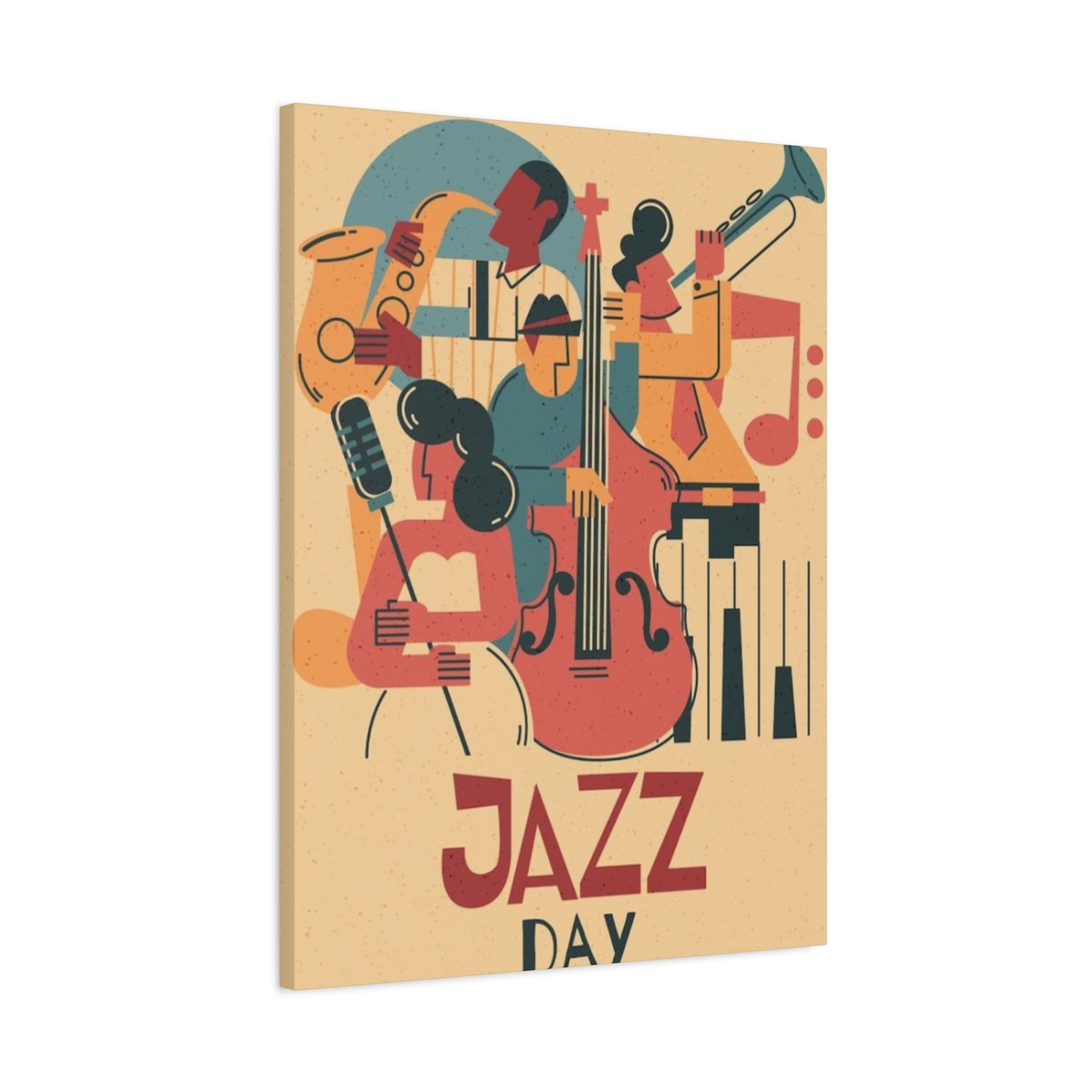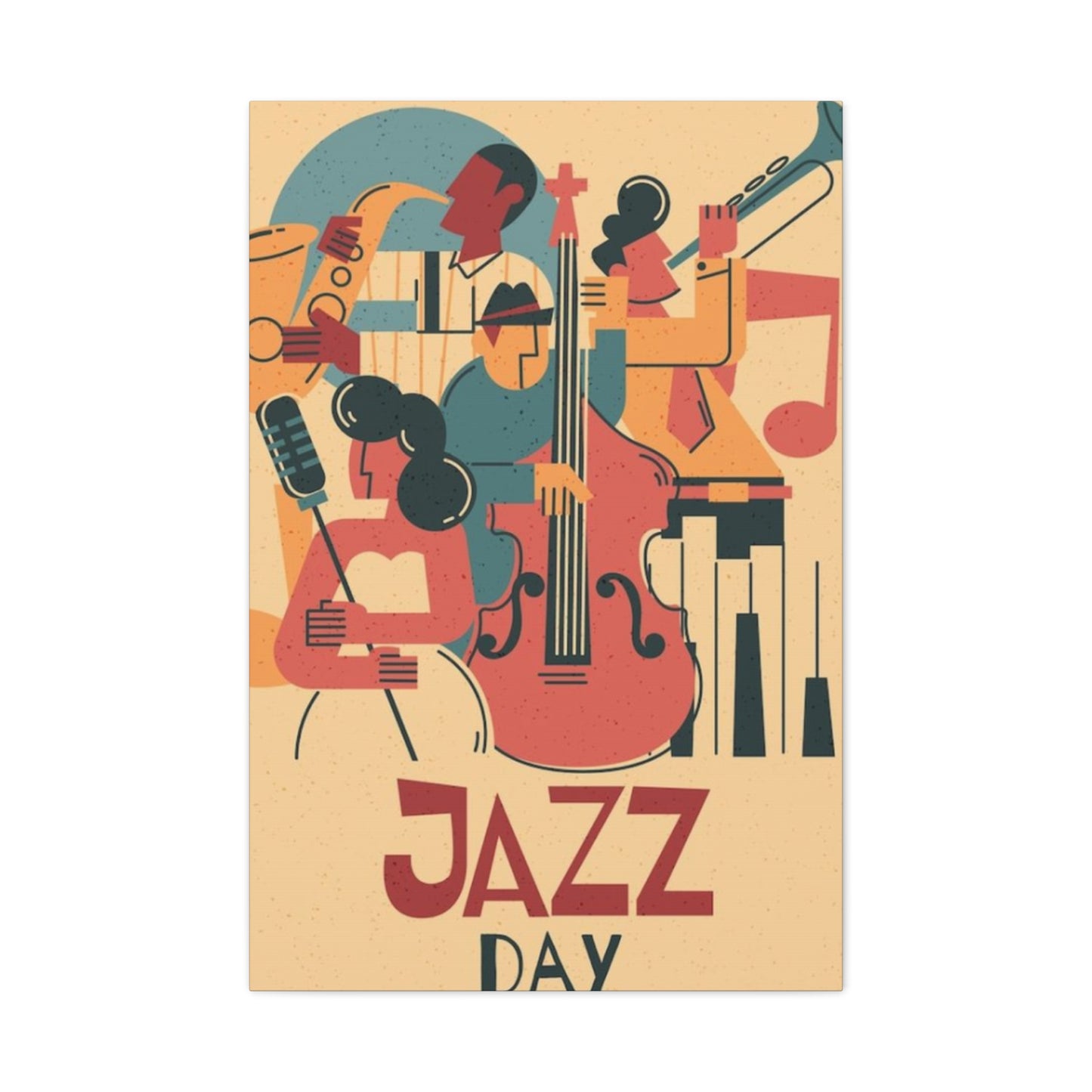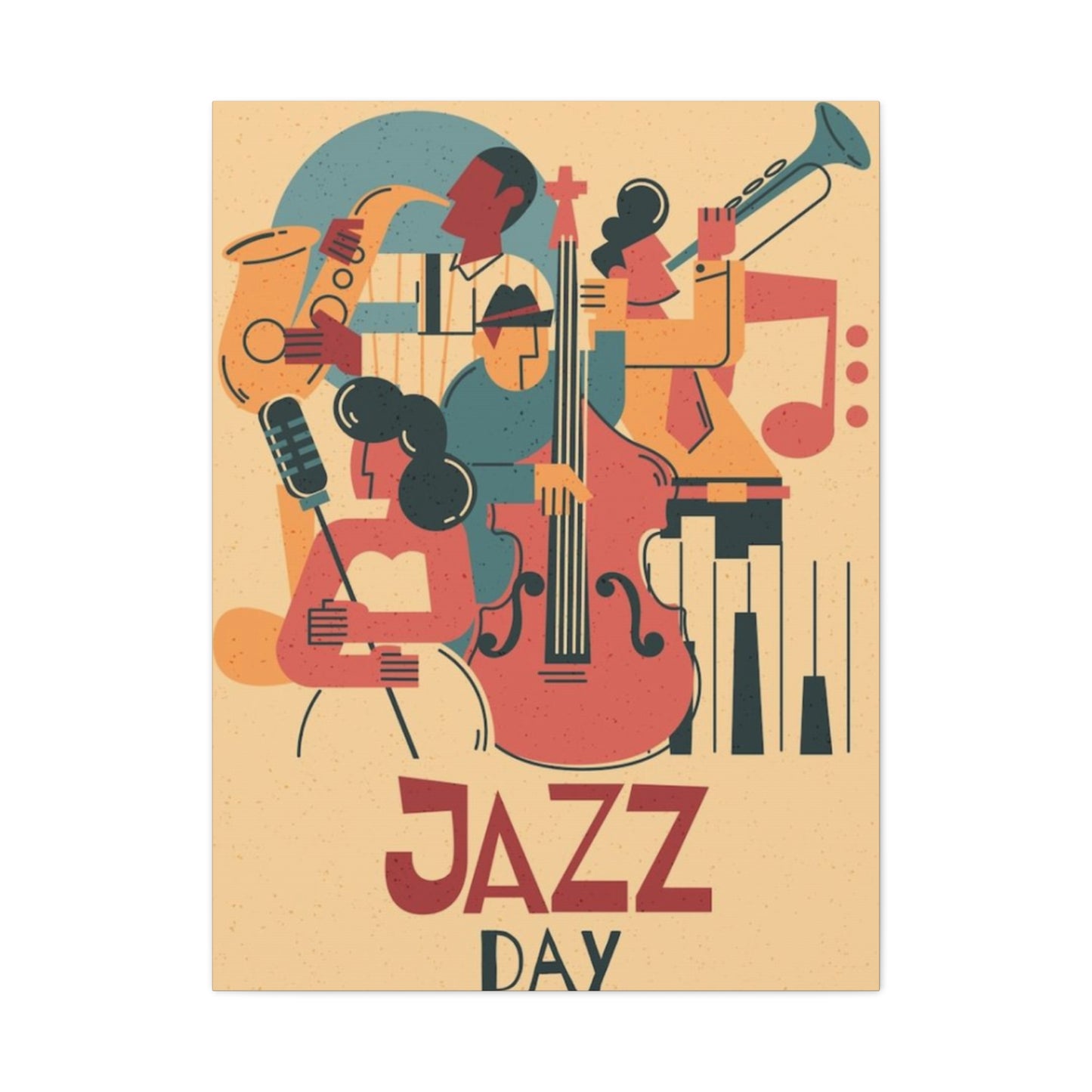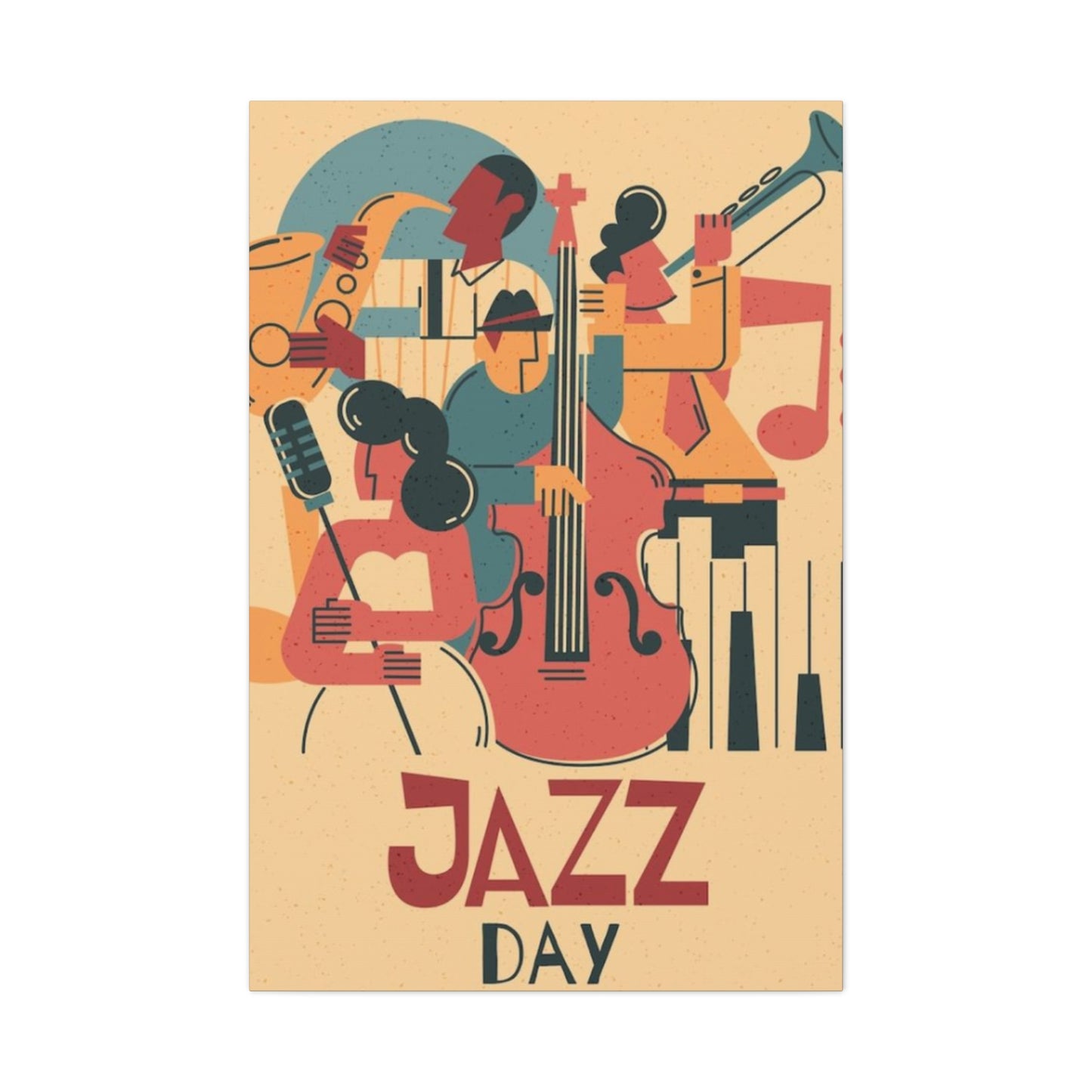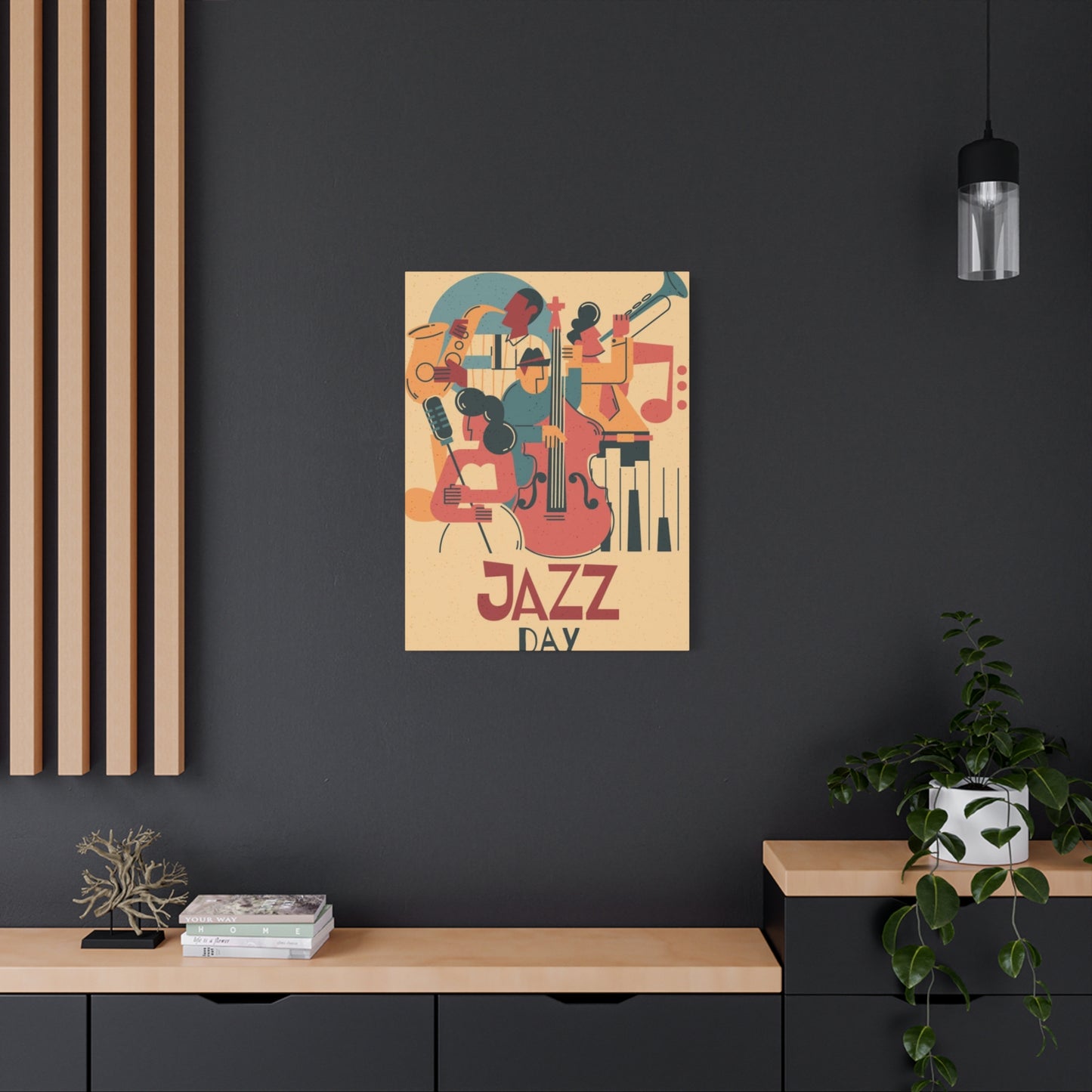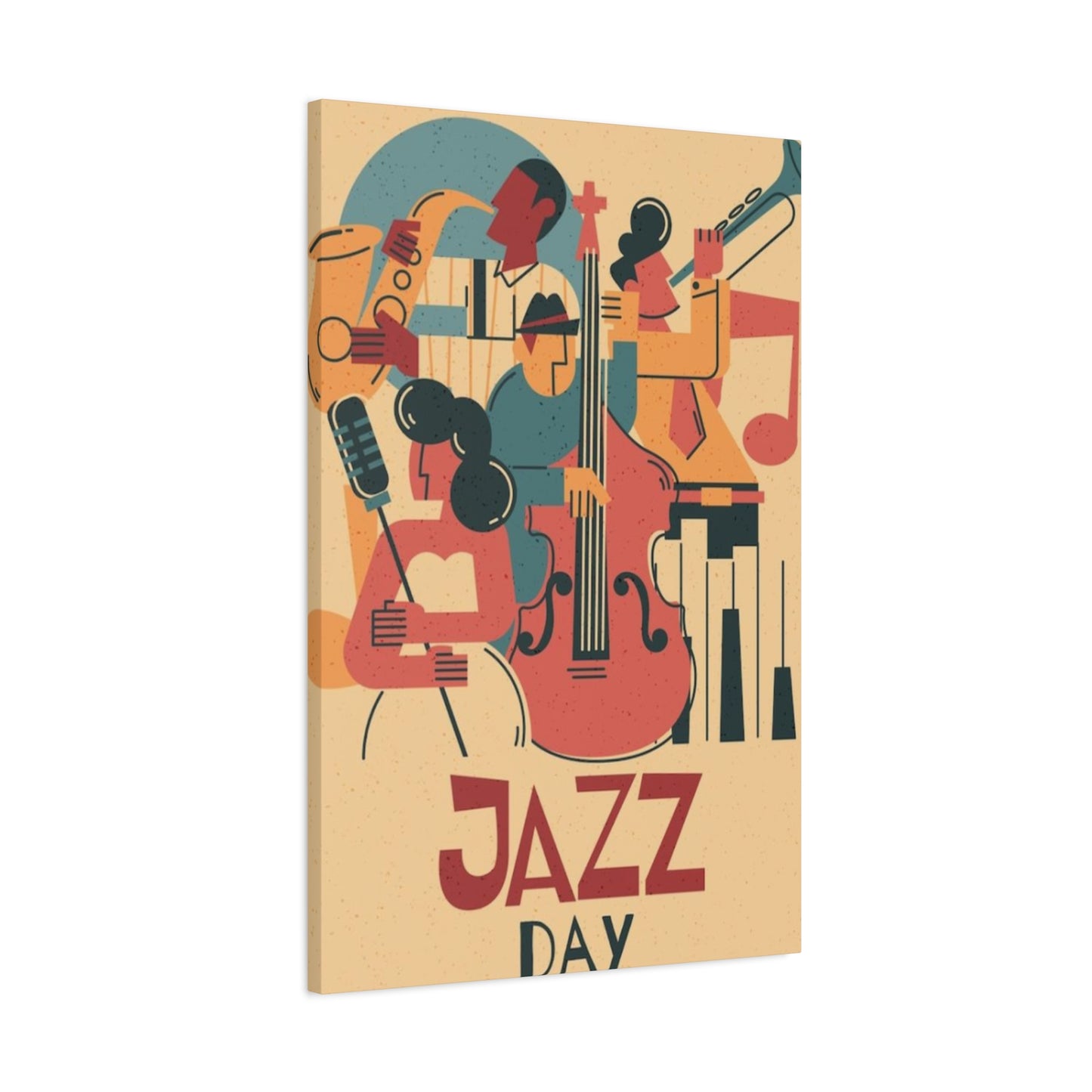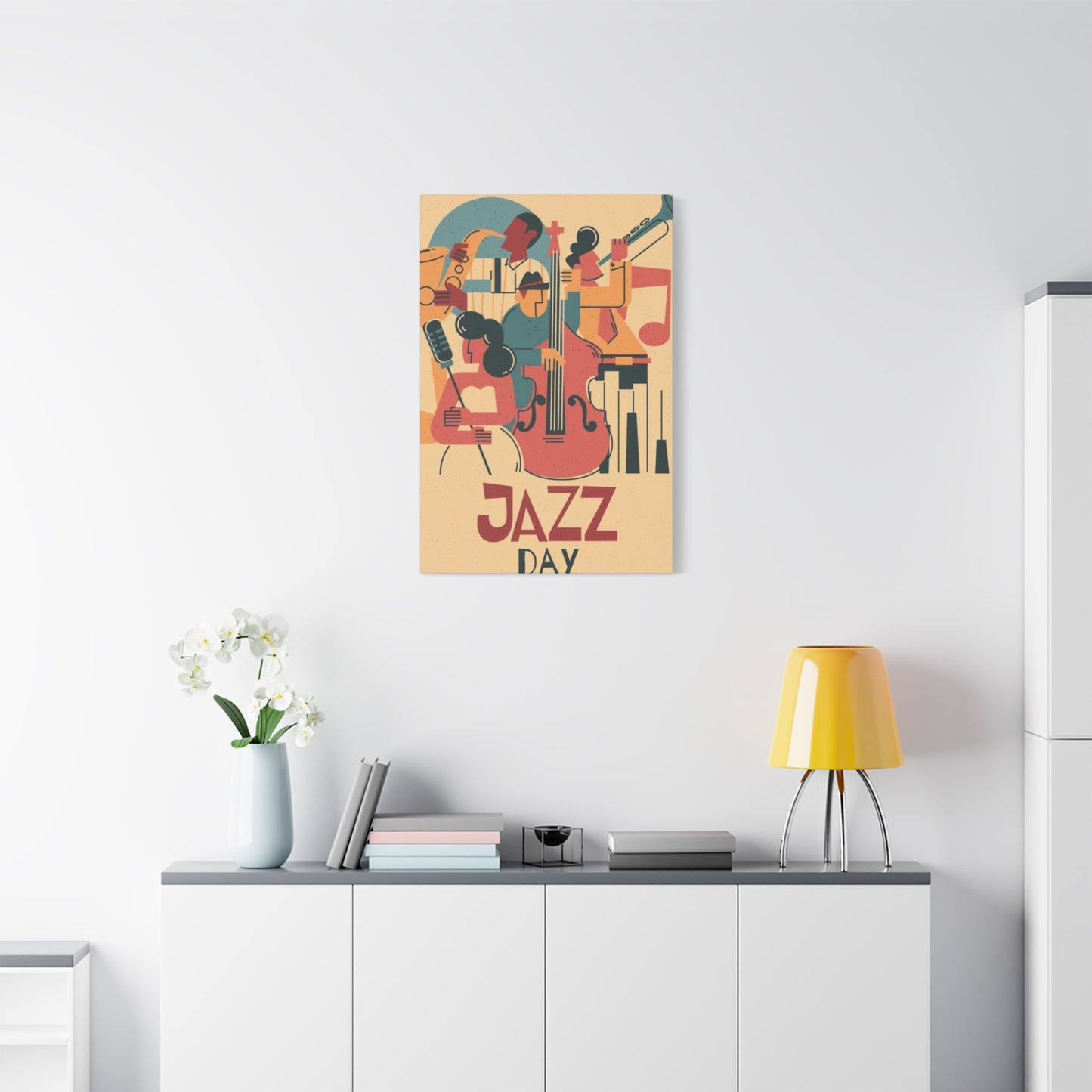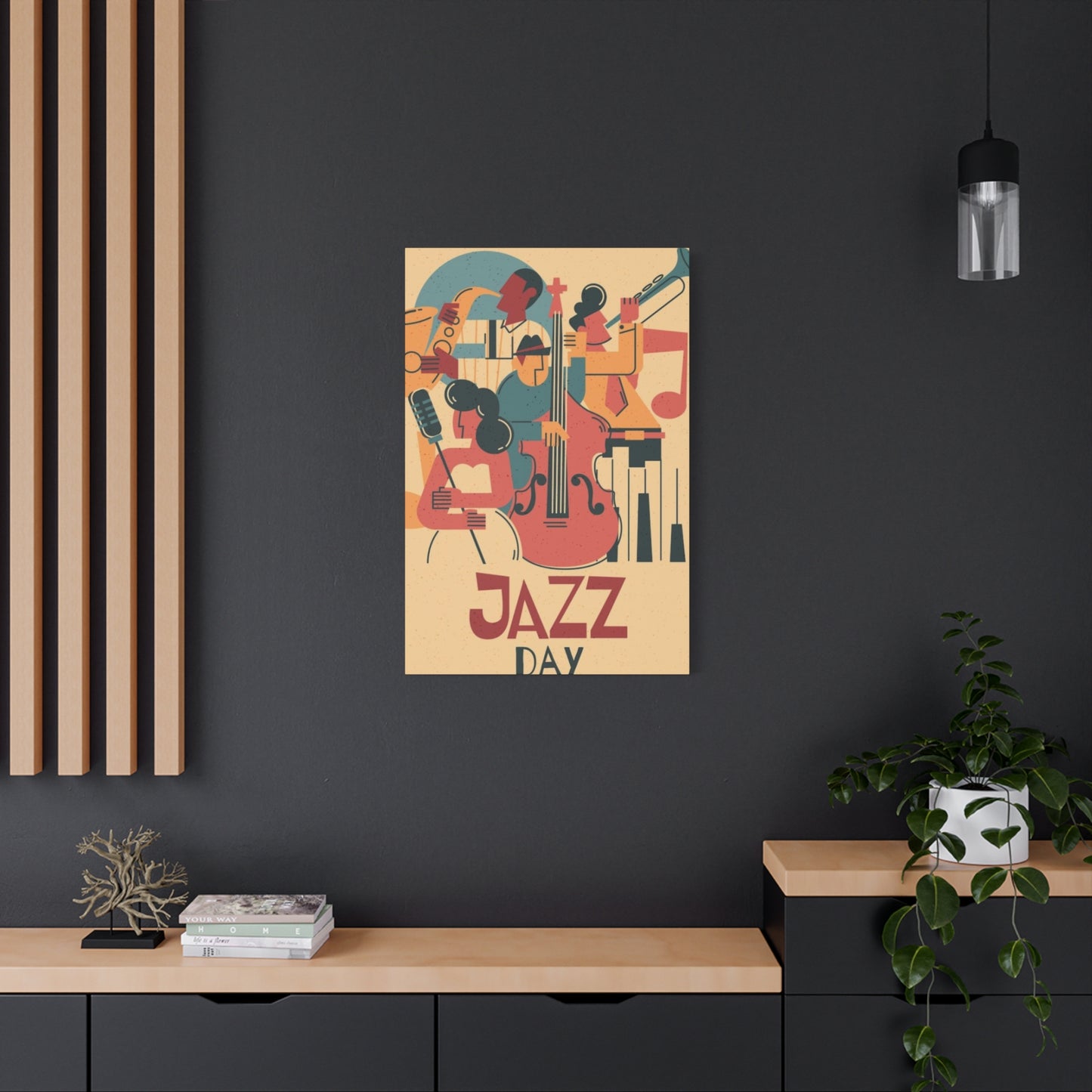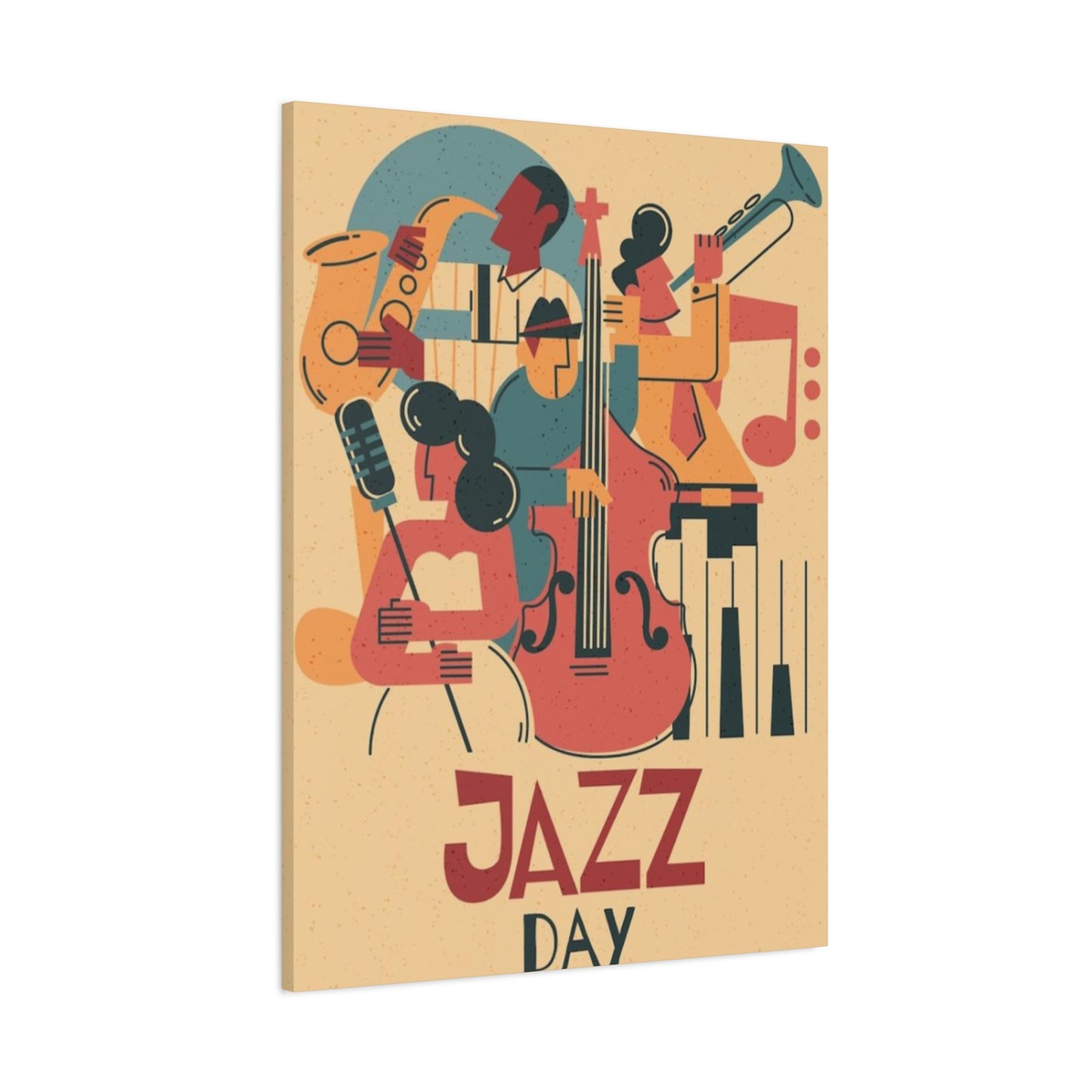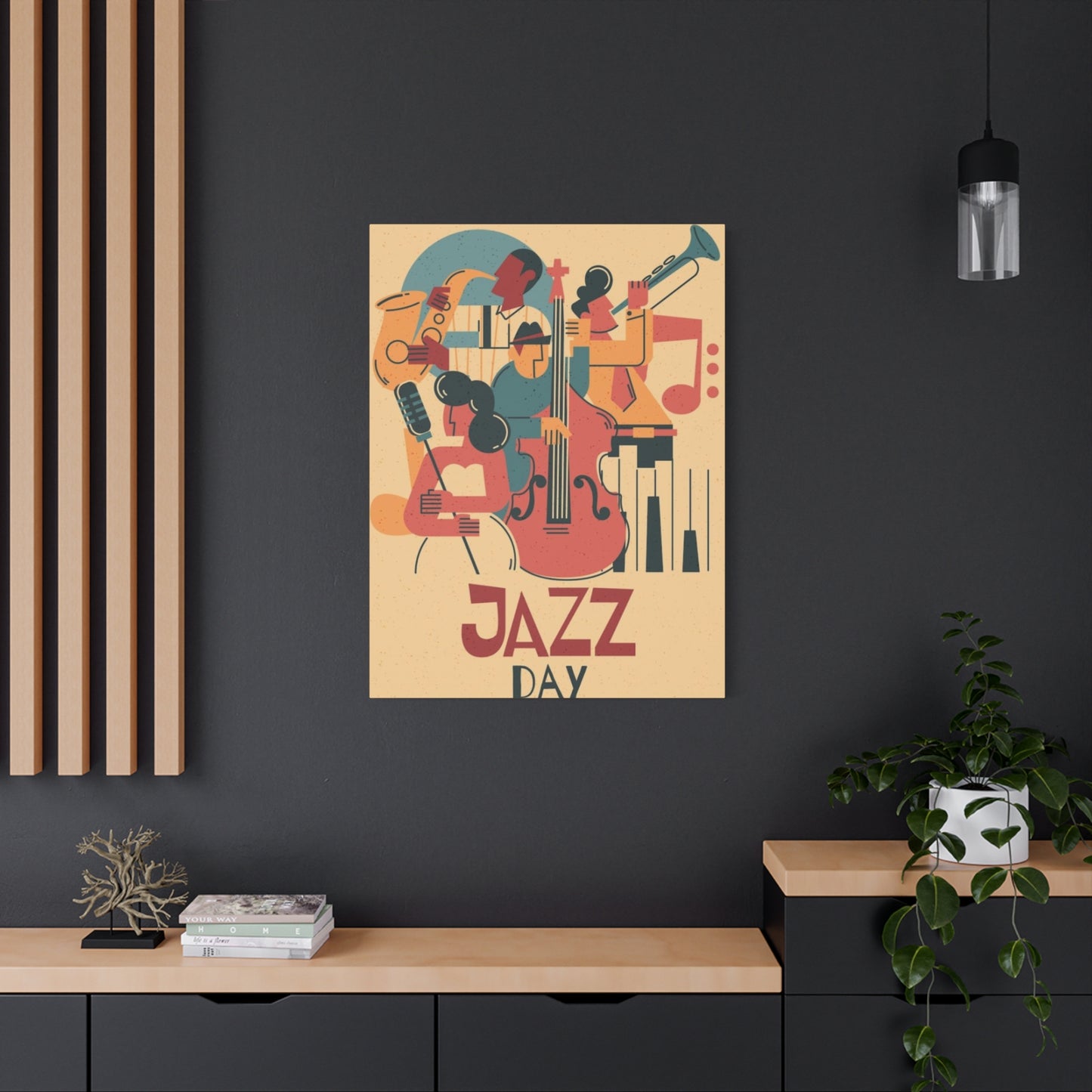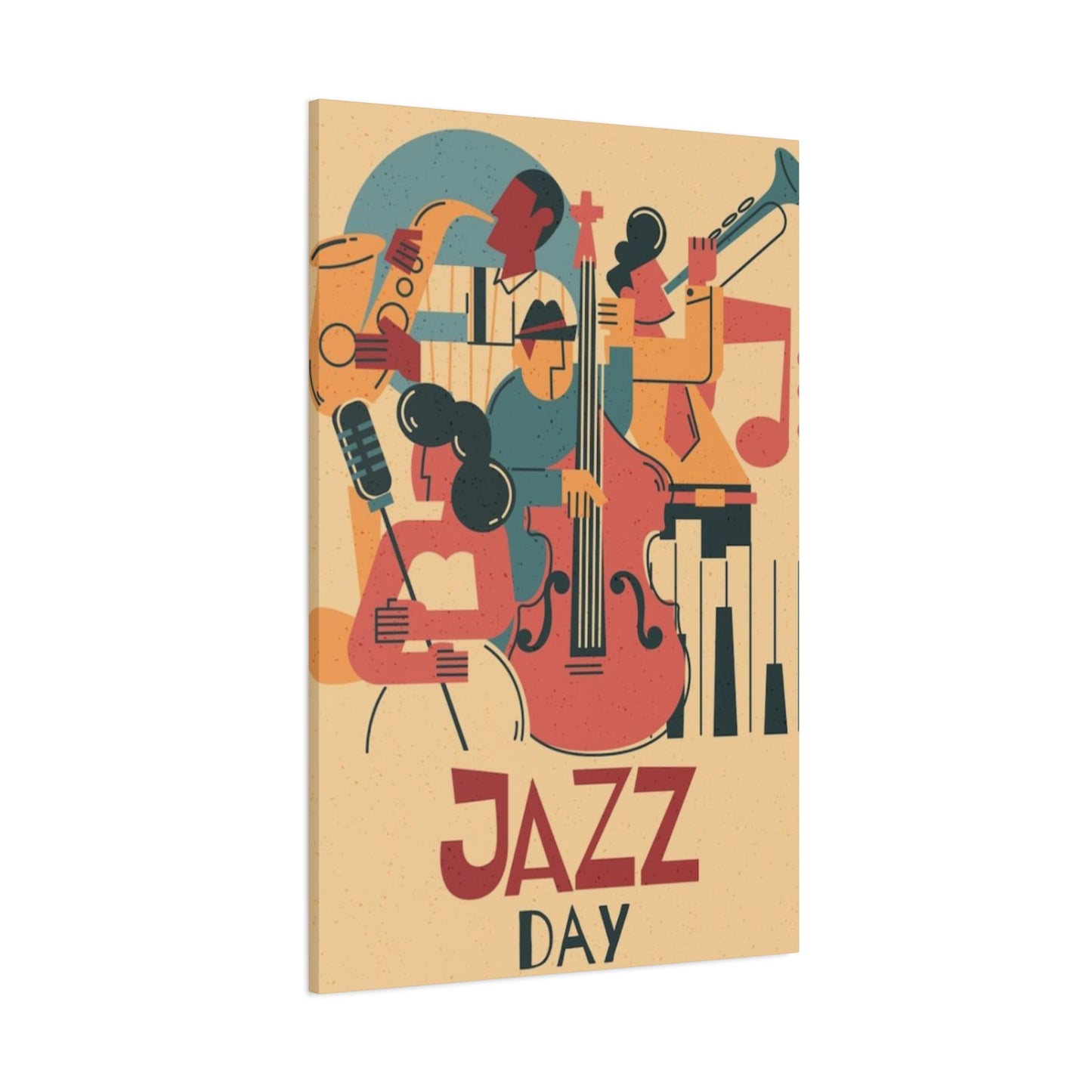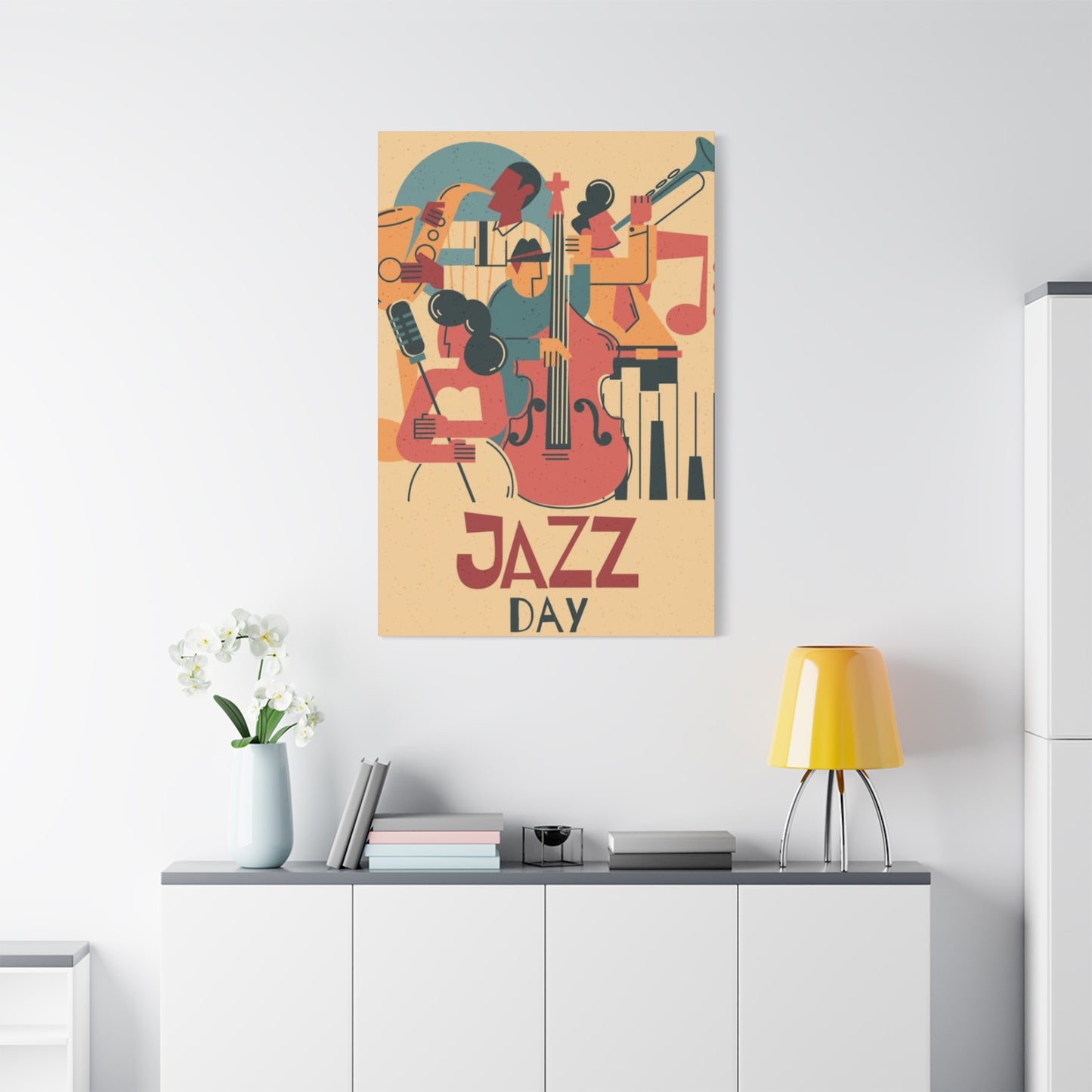Jazz Day Wall Art Expressions: Creating Musical Atmospheres for Every Music Enthusiast
Musical artwork has the remarkable ability to transform any environment into a soulful sanctuary that resonates with rhythm and melody. When it comes to celebrating the rich heritage of America's most influential musical genre, nothing captures the essence quite like carefully curated jazz-themed decorative pieces that bring the spirit of legendary performers directly into your living environment.
The world of jazz-inspired artwork offers an incredible range of possibilities for music enthusiasts who want to surround themselves with visual representations of their favorite musical genre. From vintage concert posters featuring iconic musicians to contemporary artistic interpretations of musical instruments, these decorative elements serve as constant reminders of the powerful emotional connection that exists between visual art and musical expression.
Jazz artwork encompasses far more than simple reproductions of famous album covers or photographs of legendary performers. This diverse category includes abstract representations of musical rhythm, stylized portraits of influential musicians, detailed illustrations of classic instruments, and artistic interpretations of the cultural movements that shaped this uniquely American art form throughout the twentieth century.
Historical Foundation of Jazz Artwork
The relationship between visual art and jazz music began during the early twentieth century when the genre first emerged from the cultural melting pot of New Orleans. Artists and illustrators quickly recognized the visual potential inherent in this dynamic new musical form, creating artwork that attempted to capture the spontaneous energy and improvisational spirit that defined jazz performance.
During the 1920s and 1930s, known as the Golden Age of Jazz, commercial artists working for record labels and entertainment venues developed distinctive visual styles that became synonymous with the music itself. These early examples of jazz-themed artwork featured bold geometric patterns, dramatic lighting effects, and stylized representations of musical instruments that conveyed the excitement and sophistication associated with jazz culture.
The artistic movement surrounding jazz continued to evolve throughout subsequent decades, with each era producing its own distinctive visual interpretation of the music. The bebop era of the 1940s inspired more abstract and experimental artistic approaches, while the cool jazz movement of the 1950s generated artwork characterized by more subdued color palettes and minimalist compositions.
Record album covers became particularly important vehicles for jazz artwork during the golden age of vinyl records. Iconic designs created for albums by Miles Davis, John Coltrane, Thelonious Monk, and countless other jazz legends established visual languages that remain influential in contemporary jazz artwork. These album covers often featured innovative photography, abstract paintings, and graphic design elements that perfectly complemented the musical innovations contained within.
The civil rights movement of the 1960s added another layer of cultural significance to jazz artwork, as visual artists began incorporating themes of social justice and cultural identity into their jazz-inspired creations. This period saw the emergence of powerful artistic statements that celebrated both the musical achievements of jazz musicians and their contributions to broader social and political movements.
Contemporary jazz artwork continues to draw inspiration from this rich historical foundation while incorporating modern artistic techniques and contemporary cultural references. Digital art, mixed media installations, and innovative printing technologies have expanded the possibilities for creating jazz-themed artwork that appeals to new generations of music lovers while honoring the traditional elements that make jazz culture so visually compelling.
Contemporary Artists and Jazz Visualization
Modern artists working in the jazz artwork genre have developed innovative approaches to visualizing musical concepts that go far beyond traditional representational techniques. These contemporary creators understand that effective jazz artwork must capture not just the visual appearance of musicians and instruments, but the emotional and spiritual essence of the musical experience itself.
Abstract expressionist techniques have proven particularly effective for representing jazz music visually, as these artistic approaches mirror the improvisational and spontaneous nature of jazz performance. Artists working in this style use bold brushstrokes, dynamic color combinations, and flowing compositional elements to create visual representations of musical improvisation and rhythmic complexity.
Photographic approaches to jazz artwork have also evolved significantly in recent decades, with photographers developing techniques that capture the energy and atmosphere of live jazz performance in ways that static images can effectively convey. These photographers often work in challenging lighting conditions found in jazz clubs and concert venues, using creative approaches to lighting and composition that enhance the dramatic and intimate qualities of jazz music.
Digital artists have embraced jazz themes with particular enthusiasm, using computer-based tools to create stunning visual interpretations of musical concepts that would be difficult or impossible to achieve through traditional artistic media. These digital creators often combine multiple artistic techniques within single compositions, layering photographic elements, abstract patterns, and typographic designs to create complex visual narratives that parallel the sophisticated musical structures found in jazz composition.
Installation artists have also found jazz to be a rich source of inspiration, creating large-scale environmental artworks that immerse viewers in jazz-influenced sensory experiences. These installations often incorporate sound elements alongside visual components, creating multimedia experiences that engage multiple senses simultaneously and provide deeper connections between visual art and musical expression.
Street artists and muralists have contributed significantly to the contemporary jazz artwork movement, creating large-scale public artworks that celebrate jazz culture while making this musical heritage accessible to broader audiences. These public artworks often feature portraits of legendary jazz musicians, representations of musical instruments, and abstract interpretations of jazz themes that bring the spirit of jazz culture into urban environments.
Contemporary printmaking techniques have enabled artists to create jazz-themed artwork that combines traditional craftsmanship with modern production methods, resulting in pieces that possess both artistic integrity and accessibility for collectors who want to incorporate jazz artwork into their personal collections.
Iconic Musicians in Visual Representation
The visual representation of legendary jazz musicians has become one of the most popular and emotionally resonant categories within jazz artwork. These artistic tributes serve multiple purposes, functioning simultaneously as historical documentation, artistic interpretation, and cultural celebration of the individuals who shaped jazz music into the influential art form it has become.
Miles Davis remains one of the most frequently depicted musicians in jazz artwork, with artists drawn to both his musical innovations and his striking visual presence. Artistic representations of Davis often emphasize his iconic silhouette, his distinctive playing posture, and the intense concentration that characterized his performance style. The evolution of Davis's musical approach throughout his career, from bebop through cool jazz to fusion, has provided artists with rich source material for creating artwork that reflects different periods and styles within his musical journey.
John Coltrane's spiritual approach to music and his reputation for technical mastery have inspired artwork that often incorporates religious and transcendental themes alongside more traditional musical imagery. Artists creating Coltrane-inspired pieces frequently use flowing, upward-reaching compositional elements that suggest the spiritual seeking that characterized much of his later musical work.
Duke Ellington's sophisticated approach to jazz composition and his role as a bandleader have generated artwork that often depicts him in elegant, formal settings that reflect the refined musical arrangements he created. Artistic representations of Ellington often emphasize his dignified presence and his role as an ambassador for jazz culture during periods when the music faced significant social and cultural challenges.
Billie Holiday's tragic personal story and her emotionally powerful vocal style have inspired artwork that often incorporates dramatic lighting effects and melancholic color palettes that reflect both the beauty and the pain that characterized her musical expression. Artists working with Holiday-inspired themes often focus on capturing the vulnerability and strength that coexisted within her artistic persona.
Louis Armstrong's joyful approach to music and his role as one of jazz music's first international ambassadors have generated artwork characterized by bright colors, dynamic compositions, and celebratory themes that reflect his optimistic musical outlook and his significant contributions to making jazz music accessible to mainstream audiences.
Thelonious Monk's unconventional approach to piano playing and his distinctive personal style have inspired artwork that often incorporates angular, geometric elements that mirror the unique harmonic and rhythmic approaches that characterized his musical compositions. Artists creating Monk-inspired pieces often use bold, contrasting elements that reflect his willingness to challenge conventional musical expectations.
Charlie Parker's revolutionary approach to improvisation and his tragic early death have generated artwork that attempts to capture both his musical genius and the intense, often self-destructive lifestyle that ultimately cut short his career. Artistic representations of Parker often incorporate themes of flight and freedom alongside darker elements that acknowledge the personal struggles that shadowed his musical achievements.
Musical Instrument Artwork
The visual representation of jazz instruments has developed into a sophisticated artistic category that celebrates both the aesthetic beauty of these musical tools and their cultural significance within jazz tradition. Artists working in this area understand that jazz instruments are not merely functional objects, but symbols of musical expression that carry deep cultural and emotional associations.
The saxophone, perhaps the most iconic instrument associated with jazz music, has inspired countless artistic interpretations that range from photorealistic representations to highly stylized abstract interpretations. Artists are drawn to the saxophone's elegant curved form and its association with the smoky, intimate atmosphere of jazz clubs. Saxophone artwork often emphasizes the instrument's sensual curves and its metallic surfaces, which provide opportunities for dramatic lighting effects and reflective elements that enhance the visual impact of these artistic pieces.
Piano keyboards have provided artists with rich opportunities for creating jazz-themed artwork that explores themes of musical harmony, rhythmic complexity, and the interplay between black and white keys that serves as both a visual and metaphorical element in jazz culture. Artistic representations of pianos often focus on the contrast between the black and white keys, using this visual element to explore broader themes related to jazz music's role in American cultural history.
The double bass, with its large size and distinctive shape, has inspired artwork that often emphasizes the physical relationship between musician and instrument, capturing the intimate connection that exists between jazz bassists and their instruments. Artists creating bass-inspired artwork often focus on the instrument's elegant proportional relationships and its role as the foundation for jazz rhythm sections.
Trumpet artwork often emphasizes the instrument's bright, penetrating sound through the use of bold colors and dynamic compositional elements that suggest the power and clarity of trumpet performance in jazz contexts. The trumpet's association with legendary performers like Miles Davis and Louis Armstrong has provided artists with additional layers of cultural significance to explore in their creative work.
Drum set artwork presents unique challenges and opportunities for artists, as these complex percussion configurations offer multiple visual elements that can be emphasized individually or incorporated into comprehensive compositions that capture the rhythmic foundation that drums provide for jazz performance. Artists working with drum-themed imagery often focus on the circular forms of cymbals and drum heads, using these shapes to create dynamic compositions that suggest rhythmic movement and percussive energy.
Harmonica artwork, while less common than representations of other jazz instruments, often emphasizes the intimate, personal nature of this small but expressive instrument. Artists creating harmonica-themed pieces often focus on the contrast between the instrument's modest size and its powerful emotional impact in jazz contexts.
Guitar artwork in jazz contexts often explores the evolution of the instrument's role within jazz music, from its early function as a rhythm instrument to its later development as a lead voice in jazz fusion and contemporary jazz styles. Artists working with guitar imagery often emphasize the instrument's strings and fretboard patterns, using these linear elements to create compositional structures that suggest musical rhythm and harmonic progression.
Color Psychology in Jazz Artwork
The psychological impact of color in jazz artwork extends far beyond simple aesthetic considerations, encompassing complex relationships between visual perception, emotional response, and musical association that influence how viewers connect with jazz-themed artistic pieces. Understanding these color relationships is essential for creating jazz artwork that effectively communicates the emotional depth and cultural significance of the musical genre.
Blue has become perhaps the most strongly associated color with jazz music, largely due to the genre's historical connection with blues music and the emotional concepts of melancholy and introspection that characterize much jazz expression. The phrase "having the blues" has created strong cultural associations between blue colors and emotional states that jazz artists have exploited extensively in their visual work. Different shades of blue communicate different emotional qualities, with deeper navy blues suggesting sophistication and mystery, while lighter blues convey more optimistic and accessible emotional territories.
Red colors in jazz artwork often represent passion, energy, and the heated emotions that drive jazz improvisation and performance. The association between red colors and emotional intensity makes this color particularly effective for artwork depicting upbeat jazz styles like bebop or Latin jazz, where the music itself communicates high levels of energy and excitement. Red also carries associations with nightlife and entertainment venues, making it appropriate for artwork that celebrates the social aspects of jazz culture.
Gold and yellow colors frequently appear in jazz artwork as representations of the bright, celebratory aspects of jazz music, particularly swing era jazz and the optimistic social dancing that accompanied much jazz music during the 1930s and 1940s. These warm colors also carry associations with luxury and sophistication that align with jazz music's historical connections to upscale nightclubs and elegant entertainment venues.
Purple colors often appear in jazz artwork to represent the mysterious, late-night atmosphere associated with jazz club culture and the sophisticated harmonic concepts that characterize much jazz music. Purple's association with creativity and artistic expression makes it particularly appropriate for artwork that celebrates jazz music's reputation for innovation and improvisation.
Green colors in jazz artwork often represent growth, renewal, and the organic development of musical ideas that characterizes jazz improvisation. The natural associations of green colors make them particularly effective for artwork that explores jazz music's connections to African American cultural traditions and its role in the broader development of American popular culture.
Black and white color schemes hold special significance in jazz artwork, both for their visual drama and their cultural associations with the racial integration that jazz music helped promote throughout American society. The contrast between black and white elements creates visual tension that mirrors the harmonic tensions and resolutions that characterize much jazz music, while also acknowledging the genre's role in breaking down racial barriers in American entertainment.
Silver and metallic colors often appear in jazz artwork as representations of the instruments themselves, particularly brass and woodwind instruments that feature prominently in jazz performance. These reflective colors add visual sophistication to artwork while creating associations with the professional musicianship and technical skill that jazz performance requires.
Earth tones including browns, oranges, and warm grays often appear in jazz artwork to represent the rootsy, authentic qualities of traditional jazz styles and their connections to African American cultural traditions. These colors create feelings of warmth and authenticity that align with jazz music's reputation as a genuine expression of American cultural experience.
Artistic Techniques for Musical Visualization
The challenge of translating auditory experiences into visual form has driven artists to develop innovative techniques specifically designed for representing musical concepts in jazz artwork. These specialized approaches go beyond traditional artistic methods to create visual experiences that parallel the complexity and sophistication of jazz musical performance.
Rhythmic visualization techniques involve creating visual patterns that correspond to musical rhythmic structures, using repetitive elements, varying sizes, and dynamic spacing to suggest the complex polyrhythms that characterize much jazz music. Artists working in this area often study specific musical compositions, analyzing their rhythmic structures and developing visual representations that parallel these musical elements in ways that allow viewers to "see" the music's rhythmic complexity.
Improvisation-inspired techniques mirror the spontaneous creativity that defines jazz performance by incorporating elements of chance, intuitive decision-making, and creative response into the artistic process itself. Artists using these approaches often work without predetermined compositions, allowing their artistic choices to emerge organically in ways that parallel the improvisational approaches used by jazz musicians during live performance.
Harmonic visualization involves representing the complex chord structures and harmonic progressions that characterize jazz music through carefully orchestrated color relationships and compositional structures. Artists working in this area often use color theory principles to create visual harmonies that parallel musical harmonies, using complementary colors to represent harmonic tensions and related colors to suggest harmonic resolutions.
Textural techniques focus on creating visual surfaces that suggest the timbral qualities of different jazz instruments and performance styles. Smooth, flowing textures might represent saxophone performance, while more angular, percussive textures suggest piano or drum elements. These textural approaches help viewers connect visually with the distinctive sounds of different jazz instruments and performance approaches.
Layering techniques involve building complex compositions through multiple overlapping elements that suggest the way different instruments combine to create jazz ensemble performance. These approaches mirror the way jazz musicians listen to each other and respond to musical developments during group performance, creating visual experiences that suggest the collaborative nature of jazz music creation.
Movement suggestion techniques use directional elements, flowing lines, and dynamic compositions to create impressions of musical movement and development. These approaches help translate the temporal aspects of musical experience into static visual formats, allowing viewers to sense the forward momentum and developmental processes that characterize jazz musical performance.
Scale and proportion techniques explore relationships between different visual elements in ways that parallel the relationships between different musical voices in jazz ensemble performance. Larger visual elements might represent lead instruments like saxophone or trumpet, while smaller elements represent rhythm section instruments, creating visual hierarchies that mirror musical arrangements.
Abstract expressionist techniques borrowed from mid-twentieth century painting movements provide particularly effective approaches for jazz artwork, as these methods emphasize spontaneous creation, emotional expression, and non-representational communication that parallels the abstract nature of much jazz musical expression.
Cultural Context and Historical Significance
Jazz artwork exists within a broader cultural framework that encompasses not only musical history but also social movements, racial relations, and the evolution of American popular culture throughout the twentieth century. Understanding this cultural context is essential for appreciating the full significance of jazz artwork and its continuing relevance in contemporary artistic expression.
The Harlem Renaissance of the 1920s provided crucial cultural foundation for jazz artwork, as this period saw unprecedented celebration of African American cultural achievement in multiple artistic disciplines simultaneously. Visual artists working during this period often incorporated jazz themes into their work as part of broader efforts to document and celebrate the creative achievements of African American communities. This period established important precedents for using jazz imagery as a means of cultural expression and social commentary.
The Civil Rights Movement of the 1950s and 1960s added additional layers of political significance to jazz artwork, as visual artists began incorporating themes of social justice and racial equality into their jazz-inspired creations. Many artists during this period viewed jazz music as a symbol of African American cultural achievement and resistance to racial oppression, leading to artwork that celebrated both musical accomplishment and social progress.
The international expansion of jazz music during the mid-twentieth century created opportunities for artists from diverse cultural backgrounds to interpret jazz themes through their own cultural perspectives. European, Asian, and Latin American artists brought their own artistic traditions to jazz imagery, creating culturally hybrid artworks that reflected the global reach of American jazz music while incorporating distinctive regional artistic approaches.
The integration of jazz clubs and concert venues during the Civil Rights era provided important social context for jazz artwork, as these venues became symbols of racial progress and cultural integration. Artists documenting this period often emphasized the social aspects of jazz culture, creating artwork that celebrated the music's role in bringing people together across racial and cultural boundaries.
The development of jazz education programs in universities and conservatories has influenced jazz artwork by creating more academic approaches to jazz imagery that emphasize the music's sophisticated harmonic and rhythmic structures. These educational contexts have generated artwork that explores jazz music's technical complexity while maintaining connections to its cultural and historical significance.
The emergence of jazz festivals as major cultural events has provided new contexts for jazz artwork, with artists creating pieces specifically designed for display at these festivals and events. These festival contexts often encourage artwork that celebrates jazz music's community aspects while appealing to diverse audiences that include both dedicated jazz enthusiasts and casual music fans.
The digital age has created new opportunities for jazz artwork to reach global audiences while preserving and celebrating the genre's historical significance. Online galleries, social media platforms, and digital publishing have made jazz artwork more accessible than ever before, while also creating new challenges related to maintaining the cultural authenticity and historical accuracy that give jazz artwork its deeper significance.
The ongoing evolution of jazz music itself continues to influence jazz artwork, as contemporary artists respond to new developments in jazz fusion, smooth jazz, acid jazz, and other contemporary jazz styles. These modern musical developments provide fresh inspiration for visual artists while maintaining connections to jazz music's historical foundations and cultural significance.
Display and Presentation Considerations
The effective presentation of jazz artwork requires careful consideration of environmental factors, lighting conditions, and contextual elements that enhance the viewer's ability to connect with the cultural and emotional content of these artistic pieces. Proper presentation can significantly amplify the impact of jazz artwork while inappropriate display conditions can diminish the effectiveness of even the most skillfully created pieces.
Lighting considerations play crucial roles in jazz artwork presentation, as the atmospheric qualities associated with jazz culture often depend on carefully controlled illumination that suggests the intimate, moody environments of jazz clubs and performance venues. Warm, subdued lighting often works better for jazz artwork than bright, clinical illumination, as these softer lighting conditions create emotional atmospheres that align with the music's cultural associations.
Background considerations involve selecting complementary colors and textures that enhance jazz artwork without competing for attention or creating visual conflicts. Neutral backgrounds often work well for jazz artwork, allowing the pieces themselves to command attention while providing subtle contextual support. However, some jazz artwork benefits from more dramatic background treatments that enhance the sophisticated, nightlife associations that characterize much jazz culture.
Grouping strategies for multiple pieces of jazz artwork require understanding how different pieces can work together to create comprehensive visual narratives that explore various aspects of jazz culture. Chronological arrangements might trace the historical development of jazz music through different artistic periods, while thematic arrangements might explore specific aspects like instrument representation or musician portraits.
Scale considerations involve understanding how the size of jazz artwork affects its emotional impact and cultural communication. Larger pieces often work well for creating dramatic focal points that command attention and establish jazz themes within a room, while smaller pieces can provide subtle jazz references that enhance existing decorative schemes without overwhelming other design elements.
Framing choices significantly influence how jazz artwork communicates with viewers, as different framing styles carry their own cultural and aesthetic associations. Traditional framing approaches might emphasize the historical significance of jazz artwork, while more contemporary framing styles might highlight connections between jazz culture and modern artistic expression.
Environmental context considerations involve understanding how the broader surroundings affect the reception of jazz artwork. Pieces displayed in music rooms or entertainment areas might benefit from different presentation approaches than those displayed in more formal living areas or office environments. The key is matching presentation approaches to the specific cultural and functional contexts where the artwork will be experienced.
Preservation concerns for jazz artwork require understanding the specific materials and techniques used in different pieces, as some artistic approaches may require special environmental conditions or protection from light exposure. Vintage jazz posters and album covers often require particular care to prevent deterioration, while contemporary pieces created with modern materials may have different preservation requirements.
Interactive presentation approaches can enhance the impact of jazz artwork by incorporating audio elements, information displays, or other educational components that help viewers understand the cultural context and historical significance of the pieces they are viewing. These enhanced presentation approaches can transform static artwork into more comprehensive cultural experiences.
Seasonal rotation strategies can help maintain fresh interest in jazz artwork collections while allowing different pieces to be featured prominently at different times. This approach works particularly well for extensive collections that include pieces representing different periods, styles, or themes within jazz culture.
Collecting and Curating Jazz Artwork
The collecting of jazz artwork has evolved into a sophisticated pursuit that requires knowledge of both artistic merit and cultural significance, as collectors seek pieces that represent authentic connections to jazz culture while also demonstrating high levels of artistic achievement. Successful jazz art collecting involves understanding multiple factors that influence both the aesthetic and investment value of these specialized artistic pieces.
Authentication represents a crucial concern for jazz art collectors, particularly when dealing with vintage pieces that may have significant historical or monetary value. Original concert posters, album covers, and promotional materials from significant jazz performances or recordings require careful verification to ensure their authenticity and provenance. Collectors often work with specialists who understand the specific printing techniques, paper types, and design characteristics that distinguish genuine vintage jazz materials from later reproductions.
Condition assessment requires specialized knowledge of how different materials age and deteriorate over time, particularly for paper-based items like posters and album covers that may have been exposed to various environmental conditions throughout their existence. Understanding conservation techniques and restoration possibilities can help collectors make informed decisions about acquiring pieces that may require professional treatment to preserve their long-term value and appearance.
Market trends in jazz artwork collecting reflect broader patterns in both the art market and popular culture's relationship with jazz music. Pieces associated with legendary musicians often command premium prices, particularly when those musicians experience renewed popular interest through documentaries, biographical films, or posthumous releases. Understanding these market dynamics can help collectors make strategic acquisitions while the market is favorable.
Specialization strategies allow collectors to focus their efforts on particular aspects of jazz artwork that align with their personal interests and expertise. Some collectors concentrate on specific historical periods, while others focus on particular artists, musicians, or instrument types. Specialized collecting approaches often yield more comprehensive and coherent collections while allowing collectors to develop deeper expertise in their chosen areas.
Provenance research involves investigating the ownership history and cultural context of jazz artwork pieces, particularly those with potential historical significance. Understanding where pieces originated, who previously owned them, and how they relate to specific events or periods in jazz history can significantly enhance their cultural value and collecting significance.
Conservation considerations require understanding how different types of jazz artwork should be preserved to prevent deterioration and maintain their long-term value. Professional conservation services may be necessary for valuable or historically significant pieces, while routine preservation measures can help protect more common items from environmental damage.
Documentation practices involve maintaining detailed records of collection pieces, including acquisition information, condition reports, and relevant historical context. These records serve multiple purposes, from insurance documentation to eventual resale considerations, while also helping collectors understand the broader cultural significance of their collections.
Display rotation strategies allow collectors to enjoy their complete collections while protecting valuable pieces from excessive light exposure and environmental damage. Many serious collectors maintain climate-controlled storage facilities while rotating different pieces into display areas to maintain fresh visual interest.
Insurance considerations become increasingly important as jazz artwork collections grow in value and cultural significance. Specialized art insurance policies often provide more appropriate coverage than general homeowner's policies, particularly for collections that include rare or historically significant pieces.
Donation and legacy planning involve considering how collections might eventually contribute to educational institutions, museums, or other cultural organizations that can ensure their continued preservation and public accessibility. Many collectors find satisfaction in knowing their collections will continue to serve educational and cultural purposes beyond their own lifetimes.
Investment Aspects of Jazz Artwork
The financial aspects of jazz artwork ownership encompass both immediate considerations related to acquisition costs and long-term factors that influence value appreciation over time. Understanding these investment dimensions can help both serious collectors and casual enthusiasts make informed decisions about incorporating jazz artwork into their collections while maintaining realistic expectations about financial returns.
Market valuation of jazz artwork depends on multiple factors that include artistic quality, historical significance, rarity, condition, and cultural relevance. Pieces directly associated with legendary musicians or significant historical events typically command higher prices than more general jazz-themed artwork, while original vintage pieces often carry premium values compared to contemporary reproductions or interpretations.
Authenticity verification remains crucial for establishing accurate market values, as the difference between original materials and later reproductions can significantly impact financial worth. Professional authentication services specializing in jazz memorabilia and artwork provide essential expertise for collectors seeking to establish definitive provenance and value for their pieces.
Appreciation trends in jazz artwork often correlate with broader patterns in jazz music popularity and cultural recognition. Anniversary years marking significant jazz milestones, biographical films about jazz legends, and major museum exhibitions can create temporary increases in demand that affect market prices across various categories of jazz artwork.
Liquidity considerations recognize that jazz artwork represents a specialized market segment that may require longer selling periods compared to more broadly popular art categories. Collectors should understand that jazz artwork investments typically require patience and may not provide immediate liquidity when financial needs arise.
Insurance valuation requires regular assessment of collection values to ensure adequate coverage as market conditions and cultural significance evolve over time. Professional appraisal services specializing in jazz artwork can provide accurate valuations for insurance purposes while also documenting the cultural and historical significance of collection pieces.
Estate planning considerations involve understanding how jazz artwork collections might be valued and transferred to heirs or beneficiaries. The specialized nature of these collections may require expert evaluation and potentially complex arrangements to ensure that recipients can manage and preserve the collections appropriately.
Tax implications of jazz artwork ownership include potential benefits from charitable donations to educational institutions or cultural organizations, while also encompassing responsibilities for accurate reporting of collection values for estate tax purposes. Professional tax advice often becomes necessary for substantial collections or significant individual pieces.
Diversification principles suggest that jazz artwork should represent only one component of broader investment portfolios, as the specialized nature of this market creates risks that can be mitigated through broader investment approaches. Collectors who view their jazz artwork primarily as investments should maintain realistic expectations about returns while enjoying the cultural and aesthetic benefits these pieces provide.
Storage and maintenance costs represent ongoing expenses that affect the total cost of jazz artwork ownership. Climate-controlled storage, professional conservation services, and appropriate display materials all require financial resources that should be considered when evaluating the total investment in jazz artwork collections.
Documentation requirements for investment purposes involve maintaining detailed records of acquisition costs, insurance valuations, and any conservation or restoration expenses that might affect the long-term value of collection pieces. These records serve both immediate practical purposes and long-term estate planning needs.
Digital Jazz Artwork
The integration of digital technology into jazz artwork creation and presentation has opened new possibilities for artistic expression while also creating opportunities for broader public engagement with jazz culture. These technological developments have influenced both how artists create jazz-themed work and how audiences experience and interact with these artistic expressions.
Digital art creation tools have enabled artists to experiment with jazz artwork approaches that would be difficult or impossible to achieve through traditional media. Computer graphics software allows for precise control over color relationships, layering effects, and compositional elements while also enabling artists to incorporate photographic elements, text, and abstract design elements within single compositions that explore multiple aspects of jazz culture simultaneously.
Interactive digital installations have created new ways for audiences to engage with jazz artwork, often incorporating sound elements, motion sensors, and responsive visual systems that change based on viewer behavior. These installations can create immersive experiences that combine visual art with musical elements, allowing viewers to explore connections between visual and auditory artistic expression in ways that static artwork cannot achieve.
Virtual reality applications have begun exploring possibilities for creating three-dimensional jazz artwork experiences that can transport viewers into virtual jazz club environments or provide close-up interactions with artistic representations of musical instruments and performances. These virtual experiences offer possibilities for educational applications while also creating new forms of artistic expression that leverage emerging technologies.
Digital printing technologies have made high-quality reproductions of jazz artwork more accessible and affordable, allowing broader audiences to incorporate jazz-themed visual elements into their personal environments. These printing advances have also enabled artists to create limited edition prints that maintain artistic integrity while remaining accessible to collectors with varying budget levels.
Social media platforms have created new opportunities for jazz artwork exposure and community building, allowing artists to share their work with global audiences while connecting with other jazz art enthusiasts and collectors. These platforms have also facilitated educational discussions about jazz culture and history, creating informal learning communities around shared interests in jazz artwork.
Digital archiving initiatives have begun preserving historical jazz artwork and memorabilia in electronic formats that ensure long-term preservation while making these materials accessible to researchers, educators, and interested members of the public. These archiving projects often include detailed documentation about the cultural and historical context surrounding archived materials.
Online galleries and marketplace platforms have expanded opportunities for both artists and collectors to participate in jazz artwork commerce, creating more efficient markets while also enabling artists to reach audiences that might not have access to traditional gallery spaces. These online platforms often provide educational resources alongside commercial opportunities.
Augmented reality applications have begun experimenting with ways to enhance static jazz artwork with digital overlays that provide additional information, interactive elements, or multimedia components that expand the viewer's understanding and appreciation of the artwork. These applications can transform traditional gallery experiences by adding layers of educational and interactive content.
Mobile applications designed for jazz artwork enthusiasts provide tools for cataloging personal collections, accessing information about artists and historical context, and connecting with other collectors and enthusiasts. These applications often include features for photographing and documenting artwork while also providing access to databases of information about jazz art history and market values.
Artificial intelligence applications in jazz artwork creation have begun exploring possibilities for generating jazz-themed visual content based on analysis of musical structures, historical patterns, and cultural associations. While these AI-generated works raise questions about artistic authenticity, they also provide new tools for exploring relationships between visual and musical expression.
Applications of Jazz Artwork
The use of jazz artwork in educational contexts provides powerful tools for teaching about American cultural history, musical development, and the intersection of visual and auditory artistic expression. Educational applications of jazz artwork span multiple grade levels and academic disciplines while offering engaging approaches to complex cultural and historical concepts.
Elementary education applications often use jazz artwork to introduce young students to American cultural history and the concept of artistic diversity. Visual representations of jazz musicians and instruments can help children understand how different forms of artistic expression relate to each other while also providing opportunities to discuss themes of creativity, cultural heritage, and community expression.
Middle school applications frequently incorporate jazz artwork into broader units about American history, civil rights, and cultural development during the twentieth century. At this educational level, students can begin to understand the complex relationships between jazz music and broader social movements while also developing appreciation for how visual art can document and interpret historical periods.
High school curricula often use jazz artwork as part of comprehensive studies of American literature, history, and arts education. Advanced students can analyze the cultural significance of jazz artwork while also exploring connections between visual artistic techniques and musical concepts like improvisation, rhythm, and harmonic structure.
College-level applications include specialized courses in jazz studies, American cultural history, and interdisciplinary programs that explore relationships between different artistic media. University students can engage with sophisticated analyses of jazz artwork while also conducting original research into specific artists, historical periods, or cultural themes.
Music education programs frequently incorporate jazz artwork as visual aids for teaching about jazz history, instrument recognition, and cultural context. Visual representations of jazz musicians and performances can help music students understand the cultural environments where jazz music developed while also providing inspiration for their own musical studies.
Art education applications use jazz artwork as examples of how visual artists respond to musical inspiration while also demonstrating various artistic techniques and styles. Art students can analyze the compositional approaches used in jazz artwork while also creating their own jazz-inspired artistic works.
Social studies curricula often incorporate jazz artwork into units about urban development, immigration patterns, and the evolution of American popular culture. These educational applications help students understand how artistic expression reflects and influences broader social and cultural changes.
Museum education programs frequently use jazz artwork as centerpieces for educational exhibitions and programs that serve diverse audiences from school groups to adult learners. Museum educators develop programming that uses jazz artwork to facilitate discussions about American cultural development, artistic techniques, and the role of art in documenting historical periods.
Community education initiatives often use jazz artwork in cultural centers, libraries, and community organizations to provide accessible educational programming about jazz culture and American cultural history. These programs serve diverse community populations while promoting cultural awareness and artistic appreciation.
Online educational resources increasingly incorporate jazz artwork into digital learning platforms, virtual museum tours, and educational websites that make information about jazz culture and history accessible to global audiences. These digital educational applications often include interactive elements that enhance learning engagement and retention.
Therapeutic Applications of Jazz Artwork
The therapeutic potential of jazz artwork extends beyond aesthetic appreciation to encompass genuine healing applications that leverage the emotional and cultural associations of jazz imagery for various therapeutic purposes. Mental health professionals, art therapists, and healthcare providers have discovered that jazz artwork can provide unique benefits in clinical and therapeutic settings.
Art therapy applications use jazz-themed imagery and creation activities to help clients explore emotional expression, cultural identity, and personal creativity in therapeutic contexts. The improvisational associations of jazz culture provide particularly relevant metaphors for therapeutic work that emphasizes spontaneity, authenticity, and emotional exploration.
Music therapy programs often incorporate visual elements including jazz artwork to enhance therapeutic interventions that use music as a healing modality. Visual representations of jazz instruments and musicians can help clients connect with musical experiences while also providing focal points for therapeutic discussions about creativity, expression, and cultural connection.
Reminiscence therapy for older adults frequently uses jazz artwork to stimulate memories and facilitate discussion about personal experiences with jazz music and culture. For clients who lived through significant periods in jazz history, artwork depicting these eras can provide powerful triggers for meaningful reminiscence and social engagement.
Stress reduction applications use jazz artwork in healthcare settings, waiting areas, and therapeutic environments to create calming atmospheric conditions that promote relaxation and emotional well-being. The sophisticated, contemplative qualities often associated with jazz imagery can contribute to healing environments that support recovery and wellness.
Cultural identity therapy uses jazz artwork to help clients explore connections to African American cultural heritage while also addressing themes of creativity, resilience, and cultural pride. These therapeutic applications can be particularly meaningful for clients working through identity issues or cultural connection concerns.
Grief counseling applications sometimes incorporate jazz artwork when working with clients who have personal connections to jazz music or musicians. The emotional depth and cultural significance of jazz imagery can provide meaningful frameworks for exploring loss, memory, and celebration of life experiences.
Addiction recovery programs have found that jazz artwork can provide positive cultural associations that support recovery goals while also offering alternative focuses for creative energy and emotional expression. The historical associations between jazz culture and recovery from personal struggles can provide inspirational frameworks for individuals working through their own recovery journeys.
Conclusion
Jazz Day wall art expressions offer a dynamic and soulful way to infuse any space with the rhythm, emotion, and cultural richness of one of the world’s most influential musical genres. Celebrating International Jazz Day or simply paying homage to jazz’s timeless legacy, this style of wall art captures the spirit of improvisation, community, and creativity that defines the genre. For music lovers, musicians, and art enthusiasts alike, jazz-themed décor becomes more than visual interest—it becomes an emotional and cultural experience.
What makes Jazz Day wall art particularly engaging is its ability to transform sound into visual storytelling. Through bold lines, vivid colors, and expressive imagery, artists interpret the sounds of the saxophone, trumpet, piano, and bass into works that vibrate with energy and elegance. These pieces often highlight iconic jazz figures, lively jam sessions, or abstract representations of musical flow—offering viewers a taste of the movement and freedom that jazz embodies.
Integrating Jazz Day wall art into your environment enhances the ambiance with a sophisticated yet relaxed atmosphere. It invites viewers to pause, feel, and even hear the music with their eyes. Whether it’s a solo saxophonist under a spotlight or a vibrant street jazz scene, the artwork creates an immersive setting perfect for listening rooms, home studios, lounges, or even modern living spaces that value cultural expression.
This kind of art also bridges generations and cultures, reflecting jazz’s universal appeal and global reach. From its roots in African American history to its modern-day influence around the world, jazz art celebrates diversity, resilience, and artistic freedom. Displaying it proudly in your home or creative space honors the genre’s impact while inviting its joyful, introspective, and improvisational spirit into your everyday life.

















